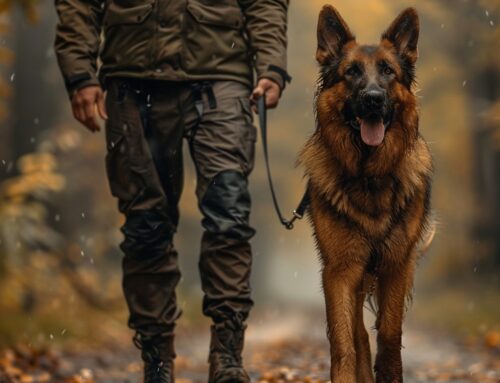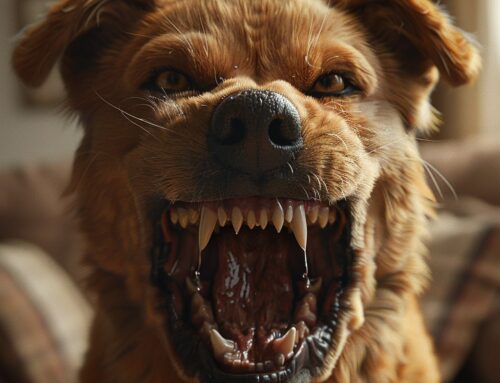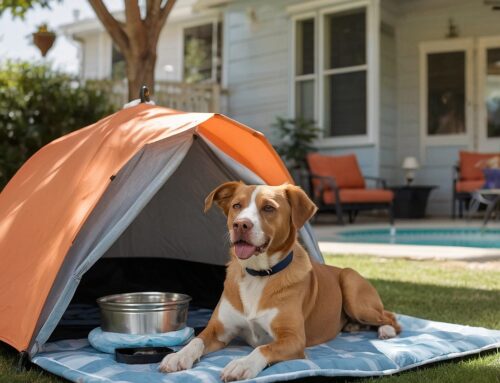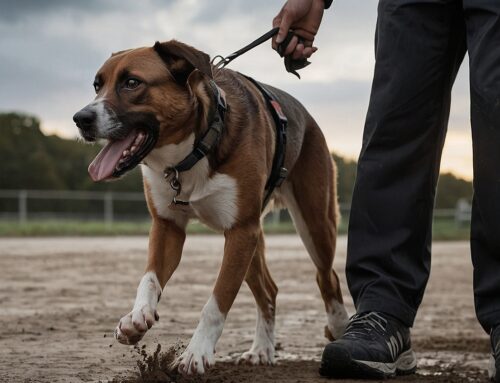Your best friend’s brand-new cashmere sweater is ruined, your neighbor’s child was knocked to the ground, and you don’t dare to have guests come to your house anymore. All of this, and more, because of your jumping dog. Fortunately, this is one canine issue that can be easily solved so you can welcome guests without worry.
Why Do Dogs Jump?
Simply put – a jumping dog is a happy, enthusiastic creature. Jumping is one of the most common and annoying dog behaviors. On the positive side, it is your dog’s way of enthusiastically greeting you and anyone who enters your home. The more exciting and expressive the event, such as you coming home from work after being gone all day, the more emotional the scene and the higher the jumps.
Similarly, dogs will greet each other by jumping, especially if they haven’t seen each other for a while. You’ll notice that they will jump up on their hind legs while they paw at and hug each other. However, your goal is to teach them more appropriate welcoming behaviors for their human friends.
Why is Jumping an Inappropriate Behavior?
We alluded to some reasons why jumping is not something you want your dog to do, and here are a few more. Jumping dogs cause:
- Soiling of clothes by muddy paws
- Knocking over people who are unstable on their feet: children, the elderly, and others
- Scaring people who are afraid of dogs
- Instigating another, jealous dog, to fight
- Hurting their own joints from constant jumping
The bottom line is that jumping on people may be bothersome to most and can be dangerous.
It’s All About Attention
Unfortunately, the more attention your dog gets when he jumps, even if it is negative attention, the more he’ll keep doing it to get more attention. For example, if you push your dog away when he jumps on you, he may think it’s a great and fun game of wrestling. It seems that everything you do to stop the jumping is eliciting an engagement for your dog.
Four-on-the-Floor
This is the term used to describe the behavior you want from your dog: a calm, non-jumping, behavior, with all four feet firmly on the floor. Better yet, a sitting posture is ideal.
The first thing you need to do is remove all emotion from his “I haven’t seen you in forever” greeting, which is at the root of your dog’s jumping. Enter the room or home calmly, without loudness or an excited, high-pitched voice. In addition, don’t pet or otherwise touch him, don’t yell at, or reprimand him, and ultimately, don’t pay any attention to him at all until he calms down.
Likewise, give your guests a heads-up before they come to your home on how to treat your dog when they arrive.
Treats, Treats, and More Treats
Instead of looking for your attention as his reward, the secret to success is to redirect him to focus on treats. The timing here is essential. Make sure he gets a treat even before he can think about jumping on you. And think in terms of high-value treats, especially in the beginning of his no-jump training. Think of it like this, you are telling him what to do, instead of what NOT to do. Not only is this a big difference, but your dog is also being trained to want to do something because, by doing so, good things happen.
Consistency is Key
If you live with other people or family members, everyone needs to be on board with how to work the four-on-the-floor rule. The same goes for when you have guests over. Make sure you have stashes of treats all throughout your living space, so it’s just a matter of a quick grab to redirect your dog. The same goes for walks. You can either prevent your dog from approaching other people on whom he will jump or carry some treats in your pocket to hand over to them, with instructions on what to do.
However, it is inevitable that there may be an instance when you DO want your dog to jump up, so you want to teach him the “Up” command. Likewise, you want him to get down when you want him to, so a command such as “Enough” or “Okay” would be important for him to learn.
Instructions
Speaking of instructions, here is the step-by-step process on how to train your dog not to jump.
When You Are Working with Your Dog
- Under any circumstance where your dog would otherwise jump on you, enter in a relaxed, quiet, calm manner. Don’t be loud or quick-moving.
- Especially as you begin this training, ignore your dog until he is completely calm before proceeding.
- Don’t touch your dog in any way: no pats, pushes, or other physical engagement.
- Ask for a sit and reward him with yummy goodies when he does.
- If he jumps, disengage, walk away, and go through the steps again.
When Guests Come to Your Home
Stage this lesson with someone you know until he learns not to jump on strangers and guests.
- Put your dog on a leash
- Have someone come to and enter your home.
- Throw some treats on the floor before the person comes close to your dog.
- Have the person come up to your dog and pet him while he is still eating the treats off the floor.
- Keep repeating this process, gradually extending the time the person comes up to and greets the dog.
- Be sure to keep throwing treats down the entire time.
- Gradually, you can feed him fewer treats and he’ll still behave the way you want.
To make this work, you need to carefully time when you throw down the treats. It needs to be a quick action. If you miss your timing, and your dog jumps on the person, instruct them to walk away and you stop throwing any treats. Pretty soon he will realize that four-on-the-floor brings good things, while jumping does nothing.
Dogs love their humans, and as you probably know, they will do anything to interact and engage with them. And their preferred method of engagement is physical. If you don’t have immediate success in training him for four on the floor, don’t be discouraged. Once he sees he’s not getting what he wants by jumping up, he’ll give up and change his behavior so he will get your attention.








